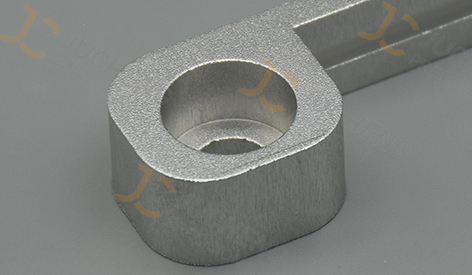ㆍPrivacy: We respect your privacy. Here you can find an example of a non-disclosure agreement. By submitting this form, you agree to our terms & conditions and privacy policy.
We use cookies to enhance your browsing experience, provide personalized content and analyze our traffic. By clicking "Accept", you agree to our use of all cookies.
Views: 7 Author: Site Editor Publish Time: 2024-04-08 Origin: Site









Introduction
The field of medical device manufacturing demands unparalleled precision and quality to ensure the safety and efficacy of healthcare interventions. This article delves into the intricate world of medical precision parts, exploring the design considerations, manufacturing processes, and quality control measures that define excellence in this critical industry.
1. Importance of Precision in Medical Devices
1.1. Patient Safety: Precision parts are crucial for the reliability and safety of medical devices used in patient care.
1.2. Functionality: Precision engineering ensures that medical devices perform their intended functions accurately and consistently.
1.3. Regulatory Compliance: Stringent regulations mandate precise manufacturing processes to meet quality and safety standards.
2. Designing Medical Precision Parts
2.1. Requirements Analysis: Understanding the functional and performance requirements of the medical device.
2.2. CAD Modeling: Utilizing computer-aided design (CAD) software to create detailed and accurate part designs.
2.3. Tolerance Considerations: Specifying tight tolerances to achieve the desired level of precision in part dimensions.
3. Materials Selection for Medical Applications
3.1. Biocompatibility: Choosing materials that are compatible with the human body to prevent adverse reactions.
3.2. Sterilization Compatibility: Ensuring that materials can withstand sterilization processes without compromising their properties.
3.3. Durability and Performance: Selecting materials with the required strength, wear resistance, and chemical stability for medical use.
4. Manufacturing Techniques for Precision Parts
4.1. CNC Machining: High-precision machining processes for complex geometries and tight tolerances.
4.2. Swiss Machining: Specialized machining technique for small, intricate parts with exceptional accuracy.
4.3. Injection Molding: Mass production of plastic precision parts with consistent quality and repeatability.
5. Quality Control in Medical Device Manufacturing
5.1. Metrology and Inspection: Utilizing advanced measurement tools and techniques to verify part dimensions and tolerances.
5.2. Statistical Process Control (SPC): Monitoring manufacturing processes in real time to detect deviations and ensure consistency.
5.3. Traceability and Documentation: Maintaining detailed records of materials, processes, and inspections for regulatory compliance and quality assurance.
6. Applications of Medical Precision Parts
6.1. Implantable Devices: Precision parts used in implants such as orthopedic implants, pacemakers, and stents.
6.2. Diagnostic Equipment: Components for medical imaging devices, diagnostic instruments, and laboratory equipment.
6.3. Surgical Instruments: Precision parts in surgical tools, robotic surgery systems, and minimally invasive devices.
7. Future Trends and Innovations
7.1. Miniaturization: Advancements in micro- and nano-scale manufacturing for smaller, more precise medical devices.
7.2. Additive Manufacturing: Growing use of 3D printing for rapid prototyping and production of customized medical parts.
7.3. Smart Materials: Integration of smart materials and sensors for enhanced functionality and patient monitoring.
Conclusion
In conclusion, precision engineering plays a pivotal role in the design and manufacture of medical devices, ensuring high performance, reliability, and safety in healthcare applications. As technology continues to evolve, the demand for precise medical precision parts will only intensify, driving innovation and advancements in the medical device manufacturing industry.

